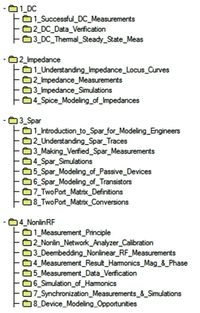| WHAT IS SPICE MODELING OF ELECTRONIC DEVICES ? This paper is an introduction to electronic device modeling, and why it is important for today's circuit design. It has been written for people who want to learn more about the history from analog electronics (tubes) to today's chips and their digital electronics, and what Spice device modeling means for the design of integrated circuits. = = = = = = = = = = = = = = = = = = = = = = = = = = = = = = = = = = = = SOLAR-POWERED AND BATTERY-BUFFERED LED ARRAY This application note explains first the development of the analog electronic circuit schematic: During sun light, the accumulator shall be charged, and during night time, the accumulator shall power the LEDs. In a second step, the basics of electronic device modeling are explained. Spice Models for each component of the schematic are developed. This will enable to simulate the performance of the complete circuit. If the models have been developed accurately, the simulation result will match the built-up and measured circuit.
WHAT IS A SPICE MODEL CARD ? The term 'model card' stems from the 1970ies when the simulation program Spice has been developed, and punch cards have been the means of choice to do programming. More details are given in this application note. CURVE FITTING FOR SPICE MODELING INTERPRETING IMPEDANCE PLOTS FOR SUCCESSFUL PASSIVE DEVICE MODELING An extremely valuable skill for modeling engineers is to interpret impedance plots according to Spice modeling. This application note starts from the very basics and extends to full best practice experiences with this method. 90 YEARS OF TWOPORT MATRICES = = = = = = = = = = = = = = = = = = = = = = = = = = = = = = = = = DIODE MODELING This detailed application note describes the complete Spice modeling of diodes: DC Forward and Reverse Modeling, Space Charge (CV) and Diffusion Charge (S-Parameter) Modeling, Nonlinear-RF (Harmonics) and Time Domain Modeling.
BIPOLAR TRANSISTOR GUMMEL-POON MODELING Although introduced to Spice already in the early 1970ies, the Gummel-Poon model is still alive and widely used, also for bipolar transistors in today's MOS processes. This app.note focuses on graphical illustrations about which measurement regions are directly related to specific model parameters. It can be applied like a 'photo album' especially for modeling engineers interested in learning practical bipolar device modeling. Notice: see also the video mentioned in Tab 'Videos'. ANGELOV GaN MODELING This application note introduces the basics of the Angelov GaN model formulas and continues with model parameter fitting for DC, thermal self-heating and S-Parameters. ASM-HEMT HEMT TRANSISTOR MODELING This paper had been given at the 2019 meeting of BipAK (Bipolar Working Group Europe). It introduces the concept of the ASM-HEMT model, which is quite different to other HEMT models, and presents then the model fitting flow from DC to S-Parameters. = = = = = = = = = = = = = = = = = = = = = = = = __ GRAND APPLICATION NOTES _______ about successful, verified measurements for device modeling Following my experience that "there are no good device models without verified device measurement", the following four Grand Application Notes share best practice experiences I made during my consulting services. The target readers are Spice modeling engineers and students of electronics. Each zipped application note covers several chapters with valuable, detailed explanations and best-practice hints. |
|



